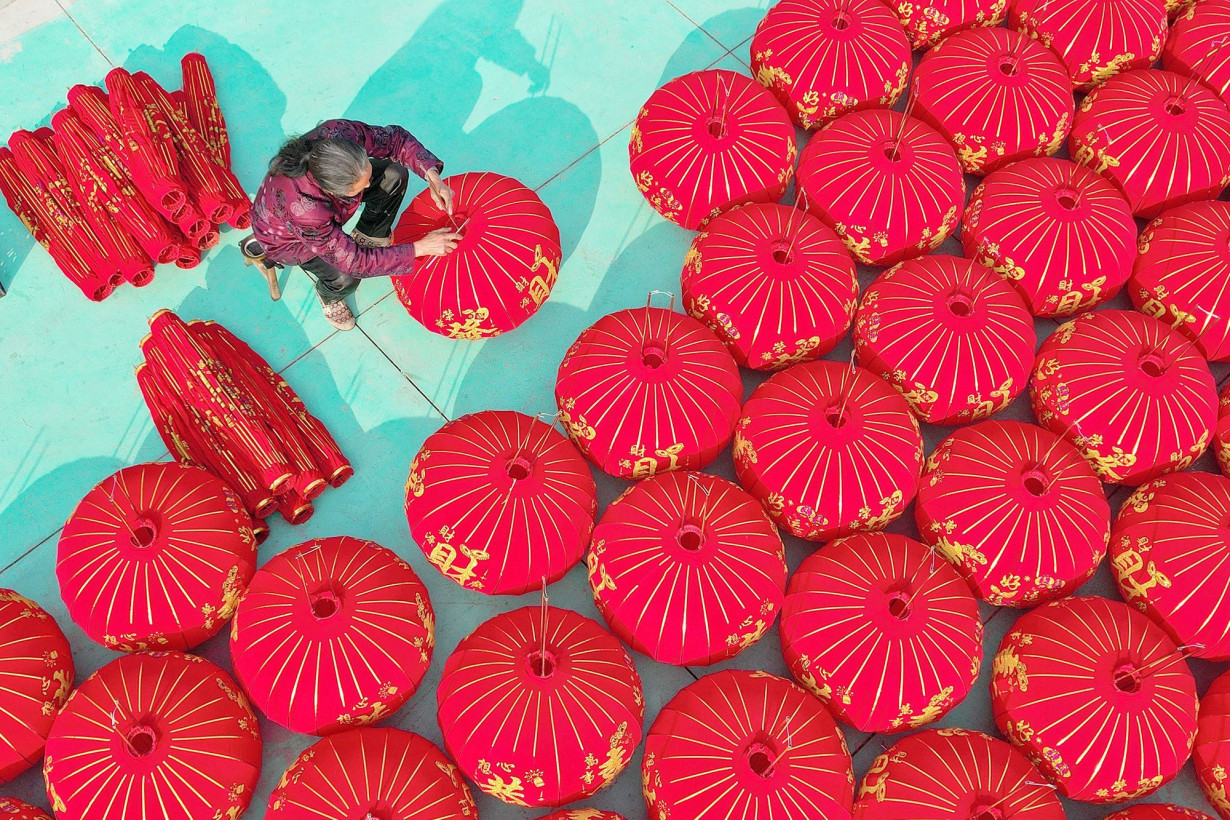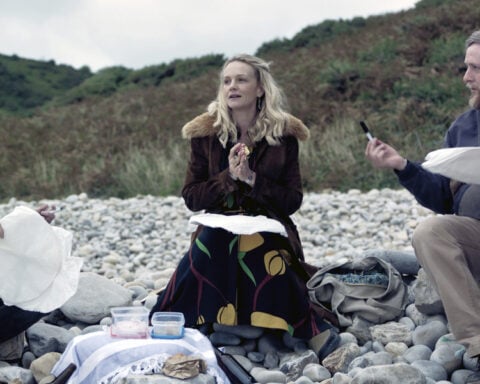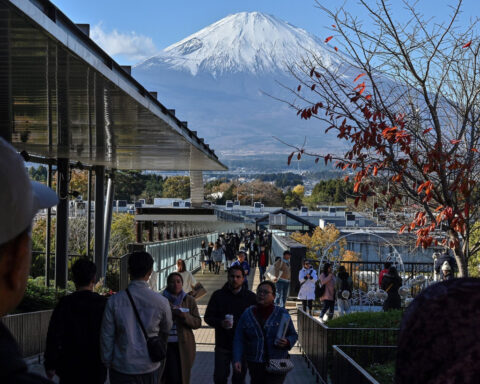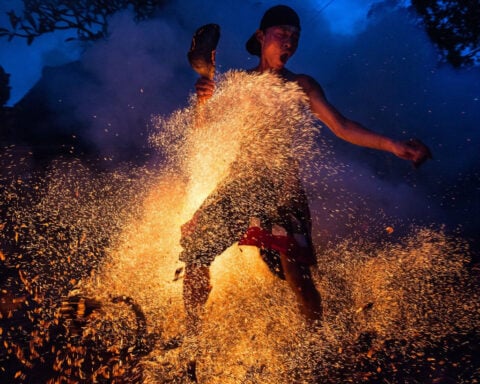(CNN) — Seeing an overabundance of red lately? From clothing shops to city streets, the fiery hue is going to be on display a lot in the coming days.
It’s all part of the fun as the world gears up to celebrate Lunar New Year, widely considered the most important event of the year in China and Chinese communities around the planet.
Marking the first new moon of the lunar calendar, it falls on January 29 in 2025, kicking off the 15-day Spring Festival. Celebrations vary depending on the country or region, but there are a few common traditions.
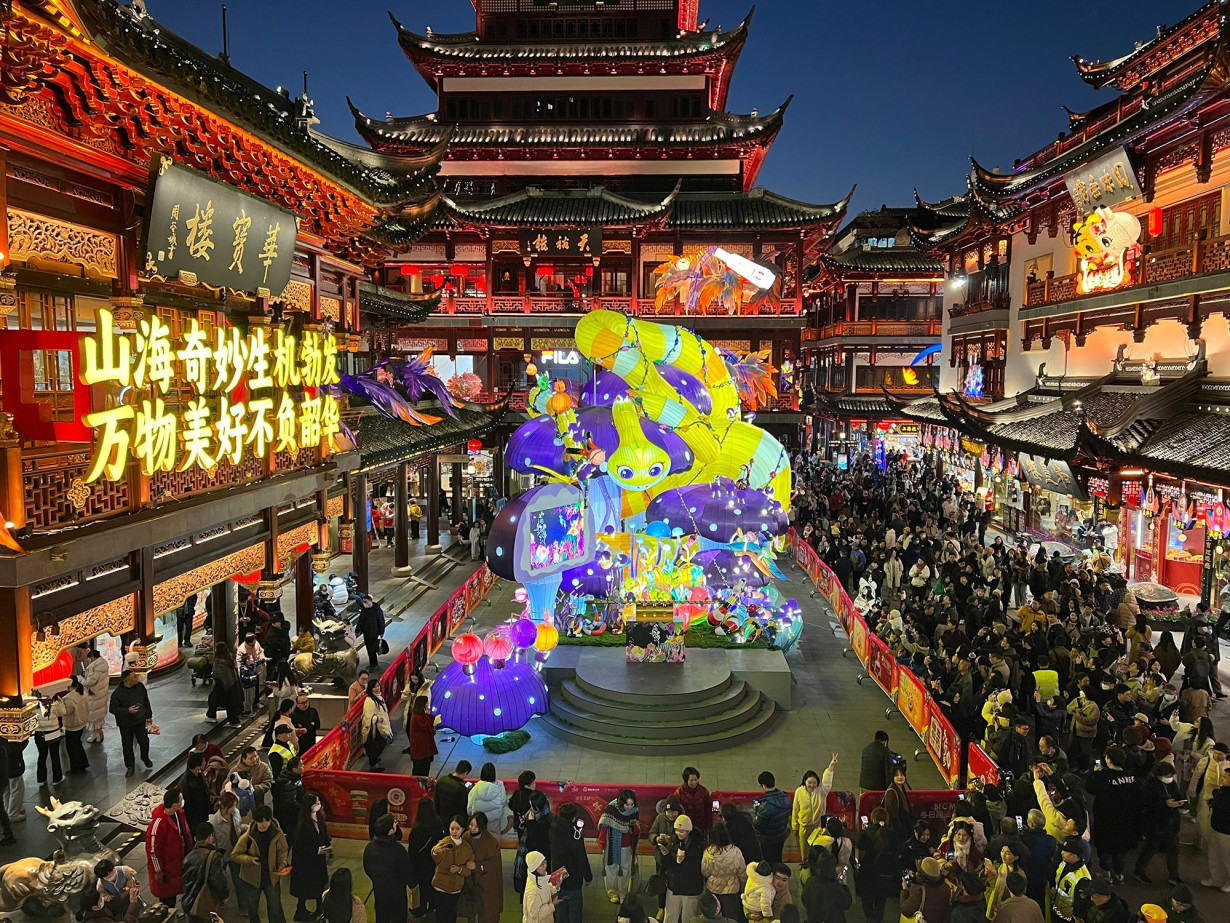
Whether you’re unfamiliar with the occasion or need a refresher, this guide to ushering in the Year of the Snake has you covered.
Why is it the Year of the Snake?
Incredibly complex, the Chinese zodiac calendar is best described as a 12-year cycle represented by 12 animals, in this order: Rat, Ox, Tiger, Rabbit, Dragon, Snake, Horse, Goat, Monkey, Rooster, Dog and Pig.
Your personal zodiac animal sign is determined by your year of birth, meaning 2025 will welcome plenty of baby Snakes. Children born in the last lunar calendar year were Dragons, while those born on or after the Lunar New Year in 2026 will be Horses, and so on.
Followers believe that for each Chinese zodiac sign, luck will depend largely on the positions of the Tai Sui — a collective name for the stellar deities thought to rotate parallel to and in the opposite direction of Jupiter.
Geomancy masters may interpret the data differently, but there is usually a consensus on what the year means for each zodiac animal based on the positions of the stars.
For many followers, the Lunar New Year is an ideal time to visit a temple to make blessings depending on what the stars have to say about their particular zodiac sign for the coming months. (More on that below.)
Why light firecrackers and wear red? Meet Nian
There are countless folktales attached to Lunar New Year, but the myth of Nian stands out as one of the most fun.
According to the legend, every Lunar New Year’s Eve this ferocious underwater beast with sharp teeth and horns would crawl onto the land and attack a nearby village.
On one such occasion as the villagers rushed into hiding, a mysterious old man showed up and insisted on sticking around despite warnings of impending doom.
To the villagers’ surprise, the old man and the village survived utterly unscathed.
The man claimed to have scared Nian away by hanging red banners on his door, lighting firecrackers and donning red clothing.
This is why wearing the fiery color, along with hanging banners and lighting firecrackers or fireworks, are Lunar New Year traditions, all of which are still followed today.
The preparation
Fun aside, Lunar New Year can actually be a lot of work. Festivities often last for 15 days — sometimes even more — with different tasks and activities taking place over that period.
It all begins about a week ahead of the new year.
Festive cakes and puddings are made on the 24th day of the last lunar month (January 23 in 2025). Why? The word for cakes and puddings is gao in Mandarin and gou in Cantonese, which sound the same as the word for “tall.”
This means eating these treats is believed to lead to improvements and growth in the coming year. (If you haven’t prepared your own “gou” yet, here’s an easy recipe for turnip cake, a beloved Lunar New Year dish.)
And don’t forget about our friend Nian. No Lunar New Year preparation would be complete without the aforementioned hanging of red banners bearing auspicious phrases and idioms (called fai chun in Cantonese and chunlian in Mandarin) at home — beginning with one’s front door.
These will perform double duty — keep Nian away and invite good fortune.
Some of the prep work isn’t quite as enjoyable. Many believe that a big cleanup should take place at home on the 28th day of the last lunar month, which falls on January 27 this year.
The aim is to rid your home of any bad luck that’s accumulated over the past year. Some believers won’t even sweep or take out the trash for the first five days of the new year, fearing they will wash away all that fresh good luck.
On a related note, many say you shouldn’t wash or cut your hair on the first day of the new year either.
Why? Because the Chinese character for the word “hair” is the first character in the word for prosper. Therefore washing or cutting it off is seen as washing your fortune away.
(Read more Lunar New Year do’s and don’ts here.)
Lunar New Year’s Eve: The big feast
A big family reunion dinner is usually held on Lunar New Year’s Eve, which falls on January 28 this year.
The menu is carefully chosen to include dishes associated with luck, including fish (the Chinese word for it also sounds like “surplus”), puddings (symbolizes advancement) and foods that look like gold ingots (such as dumplings).
In China, the foods served at these classic dinners vary from north to south. For instance, northern Chinese tend to have dumplings and noodles, whereas southern Chinese can’t live without steamed rice.
Lunar New Year feasts may look very different outside of China. In Malaysia and Singapore, gatherings aren’t complete without a loud and chaotic “prosperity toss,” or yusheng, when diners stir and toss thinly sliced vegetables and raw fish with chopsticks before a meal.
Lunar New Year’s Day: Family visits and red packets
The first few days of the Lunar New Year, especially the first two days, are often a test of one’s stamina, appetite and social skills, as many people have to travel and visit immediate family, other relatives and friends.
Bags are stocked with presents and fruits to give out at other people’s homes. Visitors will in turn be showered with gifts after exchanging conversations over Lunar New Year treats.
In many families, married people are expected to give out red packets filled with money to those who haven’t yet tied the knot — both children and unmarried juniors.
It’s believed these envelopes — known as hongbao/lai see — could protect children by warding off evil spirits, called sui.
Other countries have their own traditions. In South Korea, for instance, the Lunar New Year festival is called Seollal. The first three days are filled with tributes to ancestors, festive games and foods such as rice cakes (tteokguk) and pancakes (jeon).
Day 3: Visit a temple
Day three of the Lunar New Year (which falls on January 31 in 2025) is named chi kou/cek hau, or red mouth.
It’s believed that arguments are more likely to happen on this day, so some people will avoid social interactions and instead visit temples to make offerings to offset any potential bad luck.
As noted earlier, for many people Lunar New Year is a time to consult the stars to find out what lies ahead in the coming months.
Every year, certain Chinese zodiac signs clash with the stars negatively so temple visits are considered a good way to resolve those conflicts and bring peace in the coming months.
Day 7: The people’s birthday
The seventh day of the Lunar New Year (February 4, 2025) is said to be when the Chinese mother goddess, Nuwa, created humanity. Thus, it’s called renri/jan jat (the people’s birthday).
Different communities in Asia will serve various “birthday” foods on that day.
For example, Cantonese people eat dishes made of seven types of vegetables. In Malaysia and Singapore, the “prosperity toss” might make an appearance on tables.
Day 15: The Lantern Festival
The highlight of the whole Spring Festival, the Lantern Festival happens on the 15th and final day (February 12 in 2025).
Called Yuan Xiao Jie in Mandarin Chinese, it’s considered the perfect ending to the weeks-long Lunar New Year preparations and celebrations.
The Lantern Festival celebrates the first full moon of the year — hence the name (Yuan means beginning. Xiao means night).
It marks the departure of winter and the beginning of the spring season.
On this day, people light lanterns to symbolize driving out darkness and bringing hope to the coming year.
In ancient Chinese society, it was the only day when young girls were allowed to go out to admire the lanterns and meet boys. As a result, it’s also been dubbed Chinese Valentine’s Day.
Nowadays, cities worldwide still put on massive lantern displays and fairs on the festival’s final day.
The-CNN-Wire
™ & © 2025 Cable News Network, Inc., a Warner Bros. Discovery Company. All rights reserved.

 Trump has begun another trade war. Here's a timeline of how we got here
Trump has begun another trade war. Here's a timeline of how we got here
 Canada's leader laments lost friendship with US in town that sheltered stranded Americans after 9/11
Canada's leader laments lost friendship with US in town that sheltered stranded Americans after 9/11
 Chinese EV giant BYD's fourth-quarter profit leaps 73%
Chinese EV giant BYD's fourth-quarter profit leaps 73%
 You're an American in another land? Prepare to talk about the why and how of Trump 2.0
You're an American in another land? Prepare to talk about the why and how of Trump 2.0
 Chalk talk: Star power, top teams and No. 5 seeds headline the women's March Madness Sweet 16
Chalk talk: Star power, top teams and No. 5 seeds headline the women's March Madness Sweet 16
 Purdue returns to Sweet 16 with 76-62 win over McNeese in March Madness
Purdue returns to Sweet 16 with 76-62 win over McNeese in March Madness
